#Tipu Sultan
Explore tagged Tumblr posts
Text
Oh, the irony of the followers of a fascist ideology, whose founder was a bootlicker for the British, insulting someone who actually died fighting the British. What a fucking joke this country has become
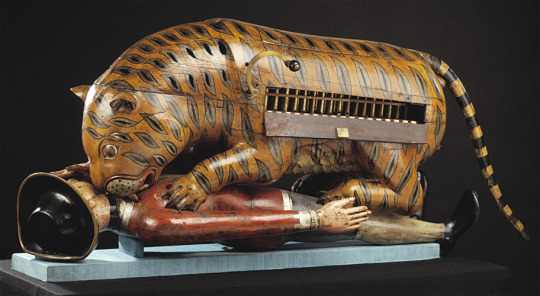
Remember Tipu Sultan, the Tiger of Mysore
#tipu sultan#india#original post#not incorrect quotes#desiblr#desi tumblr#desi tag#desi stuff#desi#islamophobia#british colonialism#colonialism
43 notes
·
View notes
Text
A nice illustration of how the RSS and their progeny create deception: the defamatory propaganda they are indulging in about Tipu Sultan. Tipu Sultan's reign was from 1782 to 1799. The Sangh Parivar's RSS scholars contend that Tipu Sultan was involved in the religious conversion of 69,000 Hindus in Kodagu (then Coorg) into Islam. Examine the population details of Kodagu district in the state gazetteer any which way mathematically and the population of Coorg at the time never crosses the upper limit of 69,000. If their contentions are true, then shouldn't Kodagu be entirely Muslim by now? However, Kodagu's muslim population stands at about 15% today. The RSS scholars are blind to this, nor does it puzzle them. Sow the seeds of deceit, and watch it grow. Tragically, these seeds of deceit are growing. The RSS and its family are even harvesting this crop of chicanery. It is evident from these that there is no Godliness in them. Deceit is their deity. It appears that these factories of deceit have strangled their own conscience.
Devanuru Mahadeva, 'RSS: Depth & Breadth'
30 notes
·
View notes
Text

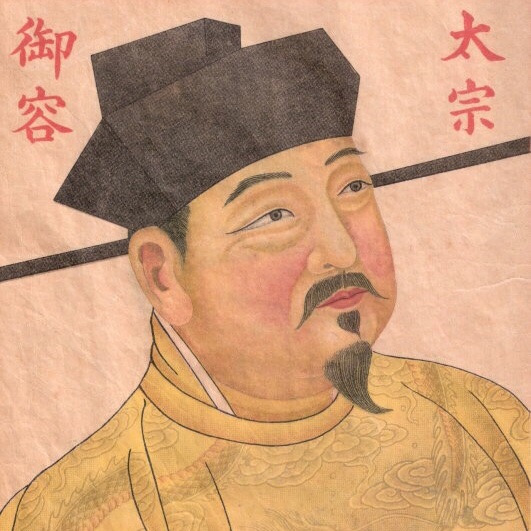
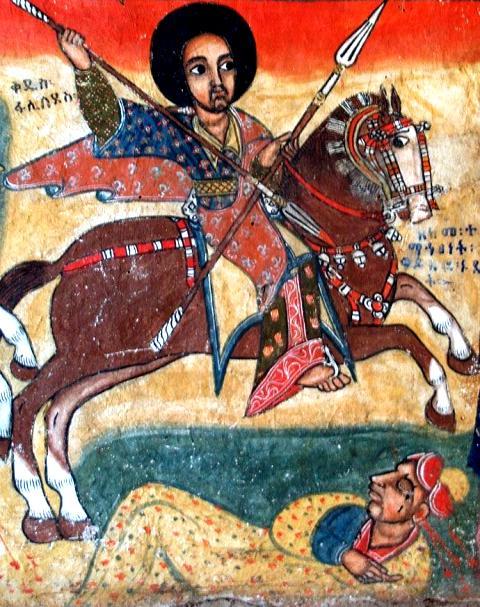
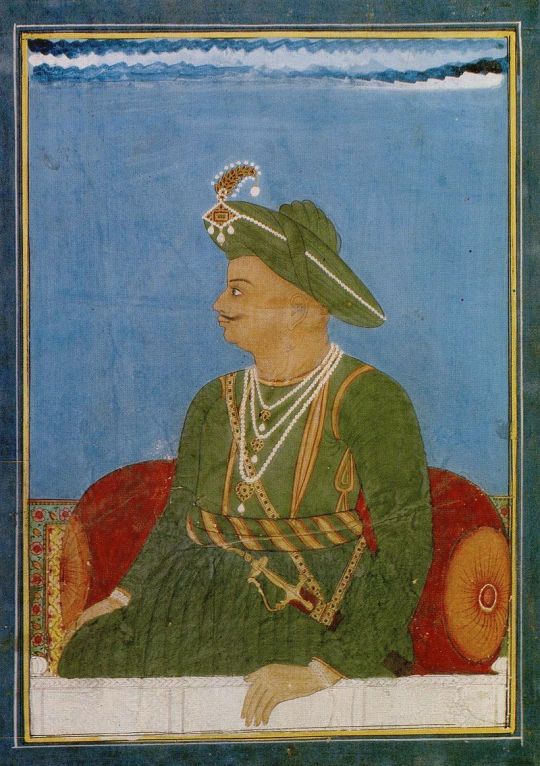
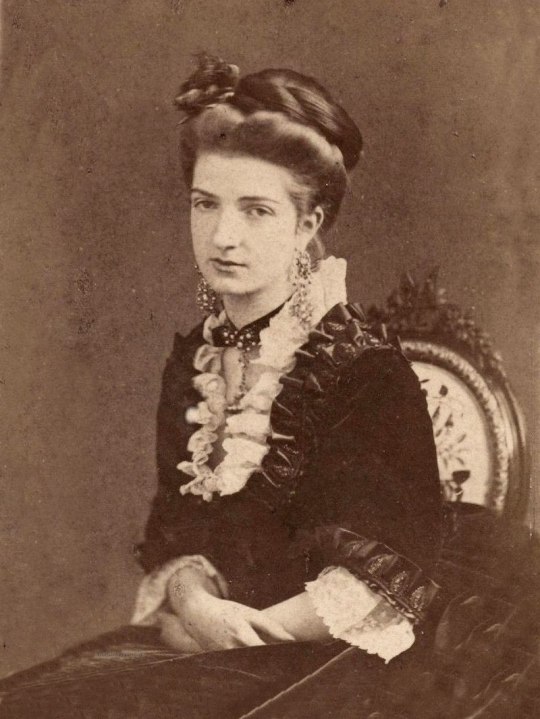





Royal Birthdays for today, November 20th:
Maximinus II, Emperor of Rome, 270
Taizong of Song, Emperor of China, 939
Fasilides, Emperor of Ethiopia, 1603
Tipu Sultan, Ruler of Mysore, 1750
Margherita of Savoy, Queen of Italy, 1851
Maria Letizia Bonaparte, Duchess of Aosta, 1866
Alexandra of Sayn-Wittgenstein-Berleburg, Countess of Pfeil, 1970
Sofia, Princess of Bulgaria, 1999
Umberto, Prince of Bulgaria, 1999
Theodora, Princess of Liechtenstein, 2004
#maximinius ii#taizong of song#tipu sultan#margherita of savoy#Alexandra of Sayn-Wittgenstein-Berleburg#Fasilides#Maria Letizia Bonaparte#sofia of bulgaria#prince umberto#theodora of liechtenstein#long live the queue#royal birthdays
11 notes
·
View notes
Text
Noor Inayat Khan was the daughter of an Indian Muslim family of musicians and poets, a descendant of the ruler Mysore, Tipu Sultan. She overcame her Buddhist belief in not taking life because of her opposition to Nazism and her hope of making common cause between Indian and English people.

She was the first woman radio operator ever dropped into France, and she chose to stay on in Paris as the only English radio operator, even when her circle was broken up and she was offered evacuation.
"Normal Women: 900 Years of Making History" - Philippa Gregory
#book quotes#normal women#philippa gregory#nonfiction#noor inayat khan#indian#muslim#musician#poet#mysore#tipu sultan#buddhist#nazi#common cause#india#england#common ground#radio operator#france#paris#evacuation#ww2#wwii#world war two#george cross#courage#dachau#special operations executive
3 notes
·
View notes
Text
Marathas Did Not Care About Hindus, Mughals Did Not Care About Muslims - History Is More Nuanced Than These Stupid Binaries
It took the British around 100 years to fully conquer India. And by India, I mean British India consisting of Myanmar, Afghanistan, Pakistan, Bangladesh and present-day India. And in this, they were helped and aided by all sorts of Indian kingdoms and people. Rajputs and Marathas were major forces that helped the British conquer the most difficult of kingdoms. For instance, Tipu Sultan who…

View On WordPress
#Aurangzeb#Bengal#BJP#Blogging#Hinduism#India#Islam#Maharashtra#Marathas#Mughals#Narendra Modi#Politics#Religion#Tipu Sultan
3 notes
·
View notes
Text
GABBLER RECOMMENDS: "Tania James on Trust, Truth, and the Desire to Create Something That Lasts"
From the podcast: Tania James: Yeah, I don’t think he actually commissioned the elephant clock. I kind of created this moment. But I think he would’ve really responded to that object that was created and designed by a 12th-century Muslim polymath. His name was Al-Jazari and he is well known in the Arab world. I don’t know. But when I discovered this thing, this was a whole other world of…
youtube
View On WordPress
#Automata#Automaton#Automatons#colonization#Lithub#Loot#Novel#Podcast#Tania James#The Maris Review#Tippoo&039;s#Tipu Sultan#Tipu&039;s Tiger#Youtube
2 notes
·
View notes
Text
Blog Post 3: Rendering and Final Showcase
Title: “Memories and Nostalgia”: The Sword of Tipu Sultan
The last activity of the project aimed to translate Tipu Sultan’s sword to make people see fine details of the sword. The lights, the selected material, and the camera direction in Blender were determined to capture the beauty in the sword.
Lighting and Rendering: Indeed, understanding the need to complement the metallic look of the blade and engravings, I relied on simple light sourcing in Blender. Having tried the changes to the HDRI maps and directional lights, I was able to balance and reach for a dramatic visual style.

Final Renders: The renders were made at 1080p in order to get the perspective view of the sword from different angles. Every shot highlights various features of the model as example is the sharpness of the blade, and even the pattern on handles.

Reflection: This project was the closest thing to a childhood rewind and superimposing that with elements of digital art. The obstacles of engraving and texturing encouraged me to research and develop new skills and the end result is a celebration of the life of Tipu Sultan.

References:
Blender Foundation (2024). Blender Manual. Available at: https://docs.blender.org/manual/en/latest/. [12 November 2024].
Adobe (2024). Substance Painter Manual. Available at: https://www.adobe.com/products/substance3d-painter.html. [12 November 2024].
Rajabzade, J., 2023. Substance Painter Ornament Path Tool brush + 106 high Quality Ornament and Trim brush. Available at: https://www.youtube.com/watch?v=9vBd7fHtSNI [Accessed 12 November 2024].
#Developing skills#Development1#Tipu Sultan#ornaments#beingmughal#sword#3d model#Memories and Nostalgia#art#blender 3d#blender#artwork#blender render#being#mughal#hamxa#drawing#game#game design#hertfordshire#learning games#study blog#digital art#propart#adobe#substance painter#memories#Render#Final Image#lighting
0 notes
Text
The ancient mosque in Bangalore has gracefully endured for more than three centuries. Each weathered stone whispers a tale. It has silently observed the passage of time under various rulers and holds the distinction of being the second-oldest mosque in Bangalore.
youtube
0 notes
Text
Tipu Sultan The Saga of Mysore’s Interregnum (1760–1799)
Publisher:Vintage Books
| Author: Vikram Sampath
| Language: English
| Format: Hardback
₹1,499 ₹899 Save: 40%
Releases around 28/10/2024

Ships within:
This book is on PRE-ORDER, and it will be shipped within 1-4 days after the release of the book.
Note : Price and release dates of pre-order books may change at the publisher's discretion before release.
In stock
ISBN: 9780670094691
Categories: History, Preorder
Page Extent: 984
Over two centuries have passed since his death on 4 May 1799, yet Tipu Sultan’s contested legacy continues to perplex India and her contemporary politics. A fascinating and enigmatic figure in India’s military past, he remains a modern historian’s biggest puzzle as he simultaneously means different things to different people, depending on how one chooses to look at his life and its events.
Tipu’s ascent to power was accidental. His father Haidar Ali was a beneficiary of the benevolence of the Maharaja of Mysore. But in a series of fascinating events, the Machiavellian Haidar ran with the hare and hunted with the hounds; he ended up overthrowing his own benefactor and usurping the throne of Mysore from the Wodeyars in 1761. In a war-scarred life, father and son led Mysore through four momentous battles against the British, termed the Anglo-Mysore Wars. The first two, led by Haidar, brought the English East India Company to its knees. Chasing the enemy to the very gates of Madras, Haidar made the British sign such humiliating terms of treaties that sent shockwaves back in London.
In the hubris of this success, Tipu obtained the kingdom on a platter, unlike his father, who worked up the ranks to achieve glory. In a diabolical war thirst, Tipu launched lethal attacks on Malabar, Mangalore, Travancore, Coorg, and left behind a trail of death, destruction and worse, mass-conversions and the desecration of religious places of worship. While he was an astute administrator and a brave soldier, the strategic tact with opponents and the diplomatic balance that Haidar had sought to maintain with the Hindu majority were both dangerously upset by Tipu’s foolhardiness on matters of faith. The social report card of this eighteenth-century ruler was anything but clean. And yet, one simply cannot deny his position as a renowned military warrior and one of the most powerful rulers of Southern India.
Discover the captivating life of Tipu Sultan in Tipu Sultan: The Saga of Mysore’s Interregnum (1760–1799), set to release in October in India. This new book, meticulously researched by historian Vikram Sampath, explores the complex and controversial legacy of one of India’s most powerful rulers. From his military conquests during the Anglo-Mysore Wars to his influence on Southern Indian history, this book provides an authoritative account of Tipu Sultan’s reign. Perfect for history enthusiasts and scholars alike, this upcoming release promises to be a must-read!
About Author
Bangalore-based historian Vikram Sampath is the author of seven acclaimed books, including Splendours of Royal Mysore: The Untold Story of the Wodeyars; My Name Is Gauhar Jaan: The Life and Times of a Musician; Voice of the Veena: S Balachander: A Biography; Women of the Records and Indian Classical Music and the Gramophone: 1900-1930. His latest books, published by Penguin Random House India, are the two-volume biography Savarkar: Echoes from a Forgotten Past and Savarkar: A Contested Legacy, 1924-1966. Both the volumes have gone on to become national best sellers.
Read More :
Website : https://padhegaindia.in/
Telegram : https://t.me/padhegaindiainitiative
Youtube: https://www.youtube.com/@PadhegaIndiaInitiative
Instagram : https://www.instagram.com/padhegaindia/https://x.com/PadhegaIndia_?mx=2
Facebook: https://www.facebook.com/PadhegaIndia.PI
#Book Preorders India#Upcoming Book Releases#Preorder New Books#Books Releasing Soon#New Book Releases India#Preorder Books Online#Latest Book Preorders#Books Coming Soon India#Buy Upcoming Books#Book Release Preorders#New Arrivals Book Preorders#Preorder Exclusive Books#Upcoming Book Preorders India#Book Launch Preorders#tipu sultan#tipu sultan online book#tipu sultan novel
0 notes
Text
homogenising something that has always been inherently diverse will kill us all one day.
#-> myra text#political critique#that is why hindutva should have not been popularised. hindutva is not decolonisation or reclamation.#it is homogenising and exclusionist. it takes away the diverse history of this country.#but this statement will reach deaf ears. rather than critiquing nobility they will go and bark casteist and islamphobic bs.#did invaders did what invaders do? yes. but this whole property destruction and lives being at risk has been going on for years.#biggest example who are quite popular: ajatshatru (son of bimbisara) & ashoka the great (the massacre at kaling)#i'm all in for criticising nobility i have no respect for any kings despite their religion and community and whatever.#they're all shits who benefited and left the common people to rot.#these people will say that tipu sultan is the devil reborn but will go on praising the marathas#as if the marathas did not cause a bloodshed in bengal karnataka and the punjab regions. not saying tipu is good but i rather#wanted to point out the hypocrisy of people in certain spaces. its a good thing to appreciate history and even better thing to learn from#the mistakes made in past but some of you guys did not understand the whole point.#absolute shit head cunts some of you guys are. come at me brand me whatever slurs you fuckers use i don't give a shit#calling people sex slaves just because they don't subscribe to your viewpoint is not the big own you think it is.#sanghi bs#india#hindutva
141 notes
·
View notes
Text


#Taka Tipu With Wife LClose Liga#down doller by#taka tipu by#Lost Life Tipu Sultan BYBY WiFe Lost LiGa
1 note
·
View note
Text

To Buy now
visit our website: www.novelemporium.com
Call: 88670 29800
Email: [email protected]
#Sikh Empire Coins#Tripura Coins#Indian Kingdom Coins#Rohilkhand Coins#Bengal Nawabs Coins#Mysore Coins#Maratha Confedaracy Coins#Manipur Coins#Madhurai Kingdom Coins#Lahore Mint Coins#Chhatrapati Shivaji Coins#Chatrapati Sivaji Coins#Nara Narayana Coins#Krishnaraja Wadeyar Coins#Chamaraja Wadeyar Coins#Tanjavur Nayakas Coins#Haider Ali Coins#Tipu Sultan Coins#Shah Alam Coins#Maratha Confedaracy Silver Coins#Maratha Copper Coins#Copper Kasu Coins#Taimur Shah Coins
0 notes
Text

The old rupee note is a symbol of the past, With its intricate designs. Old kings coins hold memories that last, Though faded and worn, its value remains, A glimpse into history, where time refrains. Visit Novel Emporium to buy your favourite Old India Coins
#Buy Indian Sultanate Coins#Indian Sultanates Coins#Tipu Sultan Coins#British India Coins#british gold coins#Old British Coins for Sale#Antique coin buyers#Antique coins#Ancient India Coins#mahatma gandhi coins#George King coins#old 1000 rupee note sale
1 note
·
View note
Text
Blog Post 2: Modeling and Texturing the Sword
Title: The Crafting of "Memories and Nostalgia": The Sword of Tipu Sultan
Having the vision and references in my hand, I then started modeling the sword of Tipu Sultan in the software of Blender. In this phase a great effort was given to transform the detailed features of the design into the 3D and to set up the model for texturing.
Modeling Process: In Blender, I first began with rough establishment of the tones of the sword model in raw form. Starting with the blades shape and further moving to the specific design of handle, every part was given good attention and made in the original style. After thus, to build something simpler but more efficient I further detailed the handle and the guard with much of concern after arriving at basing the whole artifact.

UV Unwrapping: Before texturing the sword I wanted to unwrap its UVs so I did it in Blender. One of the authors of this paper thus mentioned that this step helped make the textures to wrap around the surface correctly laying a good foundation for upcoming perturbations. It was very tedious to do it this way but it had to be so in order to realise the best results.

Texturing Challenges: It was quite fun and challenging to texturing the sword in Substance Painter. The hardest part is perhaps, the etching of the artifact as well as the inscriptions on the blade. For that, I used a YouTube video known as Engraving Details in Substance Painter. By applying normal maps and height details, I was able to achieve what I wanted to look like engraved surface.
youtube
The texturing phase made the model real, more specifically detailing the theme of the sword. In the next article, I’ll focus on the final stage of having rendered and post-processing a scene.

References:
Blender Foundation (2024). Blender Manual. Available at: https://docs.blender.org/manual/en/latest/. [11 November 2024].
Adobe (2024). Substance Painter Manual. Available at: https://www.adobe.com/products/substance3d-painter.html. [11 November 2024].
Rajabzade, J., 2023. Substance Painter Ornament Path Tool brush + 106 high Quality Ornament and Trim brush. Available at: https://www.youtube.com/watch?v=9vBd7fHtSNI [Accessed 11 November 2024].
#Developing skills#Development1#Tipu Sultan#ornaments#beingmughal#sword#3d model#Memories and Nostalgia#art#blender 3d#blender#artwork#blender render#being#mughal#hamxa#drawing#game#game design#hertfordshire#learning games#study blog#developing skills#digital art#propart#adobe#substance painter#texturing#uv unwraping#memories
0 notes
Text
"In his lifetime, Tipu Sultan of Mysore was famous for his luxuries, his tigers and his textiles, as well as for his collection of automata, including the model of a mechanical tiger straddling a mechanical British soldier screaming in fear." BASED
287 notes
·
View notes
Text
Tallying every single tree in the kingdom. Endangered South Asian sandalwood. British war to control the forests. European companies claim the ecosystem. Failure of the plantation. Until the twentieth century, the Empire couldn't figure out how to cultivate sandalwood because they didn't understand that the plant is actually a partial root parasite, so their plantation monoculture approach of eliminating companion species was self-defeating. French perfumes and the creation of "Sandalwood City".
---
Selling at about $147,000 per metric ton, the aromatic heartwood of Indian sandalwood (S. album) is arguably [among] the most expensive wood in the world. Globally, 90 per cent of the world’s S. album comes from India [...]. And within India, around 70 per cent of S. album comes from the state of Karnataka [...] [and] the erstwhile Kingdom of Mysore. [...] [T]he species came to the brink of extinction. [...] [O]verexploitation led to the sandal tree's critical endangerment in 1974. [...]
---
Francis Buchanan’s 1807 A Journey from Madras through the Countries of Mysore, Canara and Malabar is one of the few European sources to offer insight into pre-colonial forest utilisation in the region. [...] Buchanan records [...] [the] tradition of only harvesting sandalwood once every dozen years may have been an effective local pre-colonial conservation measure. [...] Starting in 1786, Tipu Sultan [ruler of Mysore] stopped trading pepper, sandalwood and cardamom with the British. As a result, trade prospects for the company [East India Company] were looking so bleak that by November 1788, Lord Cornwallis suggested abandoning Tellicherry on the Malabar Coast and reducing Bombay’s status from a presidency to a factory. [...] One way to understand these wars is [...] [that] [t]hey were about economic conquest as much as any other kind of expansion, and sandalwood was one of Mysore’s most prized commodities. In 1799, at the Battle of Srirangapatna, Tipu Sultan was defeated. The kingdom of Mysore became a princely state within British India [...]. [T]he East India Company also immediately started paying the [new rulers] for the right to trade sandalwood.
British control over South Asia’s natural resources was reaching its peak and a sophisticated new imperial forest administration was being developed that sought to solidify state control of the sandalwood trade. In 1864, the extraction and disposal of sandalwood came under the jurisdiction of the Forest Department. [...] Colonial anxiety to maximise profits from sandalwood meant that a government agency was established specifically to oversee the sandalwood trade [...] and so began the government sandalwood depot or koti system. [...]
From the 1860s the [British] government briefly experimented with a survey tallying every sandal tree standing in Mysore [...].
Instead, an intricate system of classification was developed in an effort to maximise profits. By 1898, an 18-tiered sandalwood classification system was instituted, up from a 10-tier system a decade earlier; it seems this led to much confusion and was eventually reduced back to 12 tiers [...].
---
Meanwhile, private European companies also made significant inroads into Mysore territory at this time. By convincing the government to classify forests as ‘wastelands’, and arguing that Europeans would improves these tracts from their ‘semi-savage state’, starting in the 1860s vast areas were taken from local inhabitants and converted into private plantations for the ‘production of cardamom, pepper, coffee and sandalwood’.
---
Yet attempts to cultivate sandalwood on both forest department and privately owned plantations proved to be a dismal failure. There were [...] major problems facing sandalwood supply in the period before the twentieth century besides overexploitation and European monopoly. [...] Before the first quarter of the twentieth century European foresters simply could not figure out how to grow sandalwood trees effectively.
The main reason for this is that sandal is what is now known as a semi-parasite or root parasite; besides a main taproot that absorbs nutrients from the earth, the sandal tree grows parasitical roots (or haustoria) that derive sustenance from neighbouring brush and trees. [...] Dietrich Brandis, the man often regaled as the father of Indian forestry, reported being unaware of the [sole significant English-language scientific paper on sandalwood root parasitism] when he worked at Kew Gardens in London on South Asian ‘forest flora’ in 1872–73. Thus it was not until 1902 that the issue started to receive attention in the scientific community, when C.A. Barber, a government botanist in Madras [...] himself pointed out, 'no one seems to be at all sure whether the sandalwood is or is not a true parasite'.
Well into the early decades of twentieth century, silviculture of sandal proved a complete failure. The problem was the typical monoculture approach of tree farming in which all other species were removed and so the tree could not survive. [...]
The long wait time until maturity of the tree must also be considered. Only sandal heartwood and roots develop fragrance, and trees only begin developing fragrance in significant quantities after about thirty years. Not only did traders, who were typically just sailing through, not have the botanical know-how to replant the tree, but they almost certainly would not be there to see a return on their investments if they did. [...]
---
The main problem facing the sustainable harvest and continued survival of sandalwood in India [...] came from the advent of the sandalwood oil industry at the beginning of the twentieth century. During World War I, vast amounts of sandal were stockpiled in Mysore because perfumeries in France had stopped production and it had become illegal to export to German perfumeries. In 1915, a Government Sandalwood Oil Factory was built in Mysore. In 1917, it began distilling. [...] [S]andalwood production now ramped up immensely. It was at this time that Mysore came to be known as ‘the Sandalwood City’.
---
Text above by: Ezra Rashkow. "Perfumed the axe that laid it low: The endangerment of sandalwood in southern India." The Indian Economic and Social History Review, Volume 51 (2014), Issue 1, pages 41-70. First published online 10 March 2014. DOI: 10.1177/0019464613515533 [Bold emphasis and some paragraph breaks/contractions added by me. Italicized first paragraph/heading in this post added by me. Presented here for commentary, teaching, criticism purposes.]
#a lot more in full article specifically about#postindependence indian nationstates industrial extraction continues trend established by british imperial forestry management#and ALSO good stuff looking at infamous local extinctions of other endemic species of sandalwood in south pacific#that compares and contrasts why sandalwood survived in india while going extinct in south pacific almost immediately after european conques#abolition#ecology#imperial#colonial#landscape#indigenous#multispecies#tiger#tidalectics#archipelagic thinking#intimacies of four continents#carceral geography#geographic imaginaries#haunted#indigenous pedagogies#black methodologies
276 notes
·
View notes